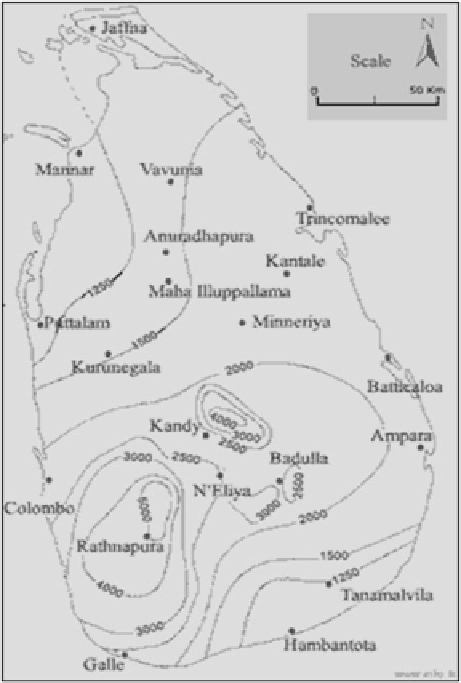Geoscience Reference
In-Depth Information
Fig. 16.2
Rainfall varies
from very high
>
5,000 mm
annually to low
1,250 mm
in the so-called dry zone
<
10 % contraction in the land area planted to tea while 25 % of the land previously
planted to rubber has become uneconomic for growing rubber due to soil erosion.
Silting of reservoirs and canals caused by upland soil erosion imposes substantial
costs and is a serious threat to food production and power supplies.
Sri Lanka enjoys plentiful rainfall, but some parts of the island face acute water
scarcity. Increased demand for water from the expanding industrial sector, rapid
urbanization and the consequent generation of waste, industrial effluents, increasing
use of agricultural chemicals, fertilizer, herbicides, and increasing salinity in
irrigated paddy lands are causing water pollution.
Although Sri Lanka does not have any desert areas as defined by the UNCCD,
some parts of the country experience serious droughts and land degradation.
The processes associated with desertification, defined as loss of productivity of
zones of Sri Lanka (Fig.
16.2
) in the near future. This would be due to accelerated
land degradation caused by human activities such as deforestation, unplanned agri-
cultural expansion, and overgrazing. In the inland regions desertification remains

Search WWH ::

Custom Search